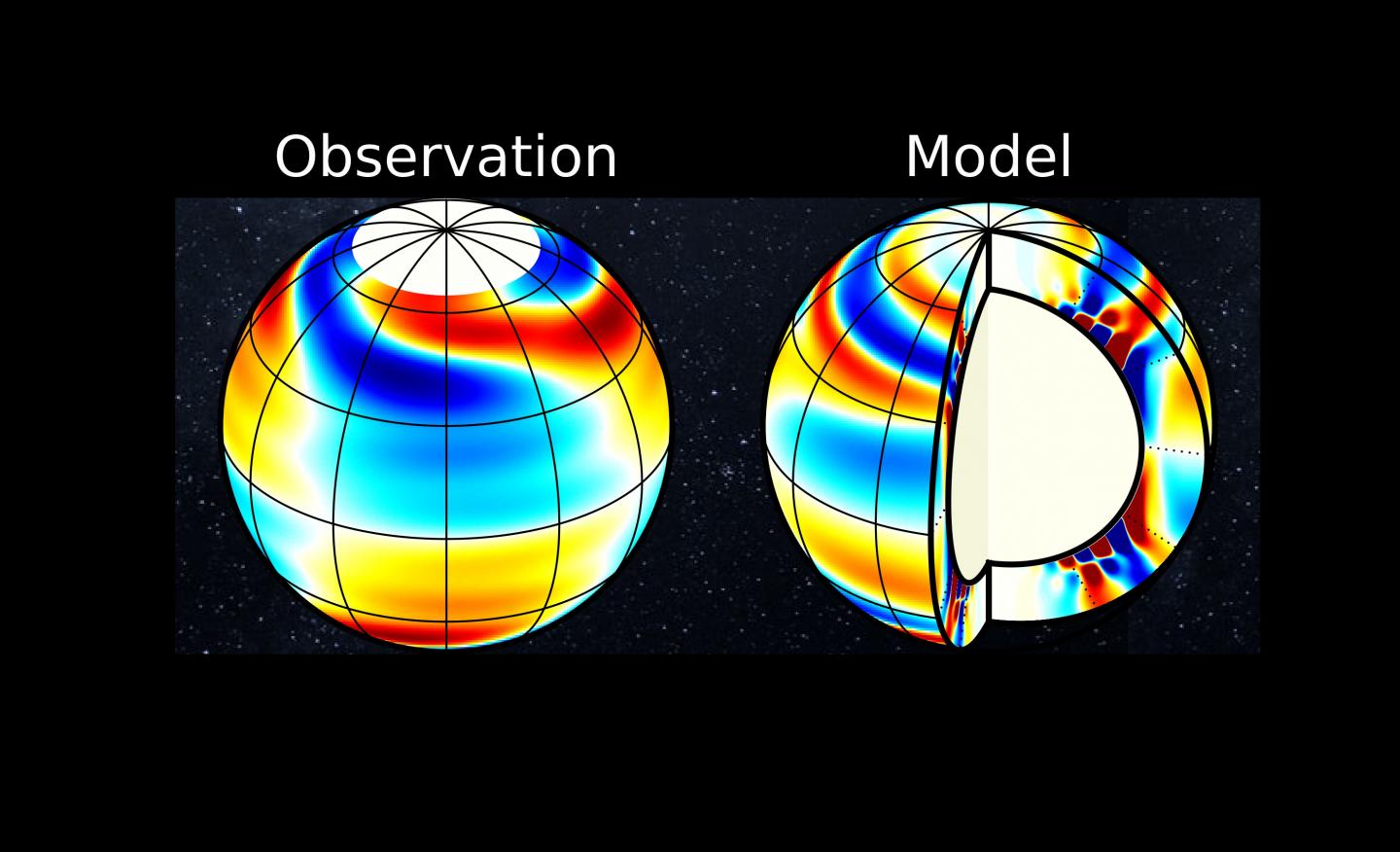They travel at five kilometers per hour: researchers have reported massive vortex movements on the surface of the Sun that can be traced back to the star’s very long oscillations. Using computer simulations, they were able to show that the newly discovered waveform is clearly caused by the so-called differential rotation of the Sun. Scientists say the results can now be used to further investigate the internal structure and dynamics of our parent star.
Stream embers: The surface and interior of the sun are constantly moving. This dynamic can cause characteristic vibrations: it has been known since the 1960s that the sun makes “loud noises”. Plasma streams near the surface of the Sun excite millions of so-called sound wave patterns with periods as short as about five minutes. The term mode describes the temporal properties of waves.
These rapid oscillations of the Sun have been recorded by ground-based telescopes and space observatories since the mid-1990s, because they can provide important information: they enable conclusions to be drawn about the Sun’s internal features—similar to the way seismologists search the interior of Earth based on the effects of earthquakes. Using what’s known as solar seismology, researchers have already been able to document rotation depending on depth and heliographic latitude: the Sun’s material thus moves at different speeds at different latitudes – this is known as differential rotation.
On the path of long-term oscillations
More than 40 years ago, it was theoretically shown that stars should have oscillations of longer periods as well as short ones. However, it has not yet been possible to clearly demonstrate these effects because they are relatively elusive. As the international team led by Laurent Gizon of the Max Planck Institute for Solar System Research in Göttingen (MPS) explains, it was necessary to observe the horizontal movements of the Sun’s surface over many years in order to establish the long-term vibrations. Exactly this data was now available: the researchers were able to evaluate information from NASA’s Heliodynamics Observatory (SDO) space probe, which includes observations of the sun over a period of ten years.
Scientists have now been able to detect a few dozen vibrations that correspond to the expected long-range releases. Some have maximum flow velocities at the poles, some at mid-latitudes and some near the sun’s equator. “Long-term oscillations manifest as very slow vortex movements on the surface of the Sun at speeds of about five kilometers per hour. It’s as fast as a human goes,” says co-author Zhi-Chao Liang of MPS.
In order to more accurately characterize the newly discovered vibrations, the scientists compared their observational data with the results of computer models about the dynamics of the Sun. The simulations included data on the Sun’s internal structure, properties of convection currents in the upper layers, and information on differential rotation obtained from helioscience research. “The models allowed us to look inside the Sun and reveal the full 3D structure of the vibrations,” says co-author Yuto Bekki of MPS.
Potential for solar energy research
It became apparent that the surface velocities in the model were in good agreement with those of the observed vibrations. The simulations also showed that the wave formations extend as deep as 200,000 kilometers below the surface of the Sun. Above all, it’s becoming clear: “All of these new oscillations that we observe on the Sun are strongly influenced by differential rotation,” says co-author Damien Fournier of MPS. The dependence of the Sun’s rotation on latitude determines where the velocity of the modes is greatest. Vibrations also depend sensitively on the properties of the sun’s interior. In particular, the force of the turbulent motions and viscosity associated with the solar medium as well as the force of the convection drive,” adds his colleague Robert Cameron of MPS.
This shows: Research into long-term vibrations could also provide new insights into the Sun’s interior. “Just as we use acoustic vibrations with solar seismology to learn more about processes within the Sun, we can use long-range vibrations to learn more about turbulent processes,” Cameron says. First author Gizon adds: “The discovery of a new type of solar oscillation is very exciting. It allows us to infer properties such as the power of the convection engine that ultimately controls the solar dynamo.”
Source: Max Planck Society, NASA, Specialized article: Astronomy and Astrophysics, doi: 10.1051/0004-6361/202141462

“Alcohol buff. Troublemaker. Introvert. Student. Social media lover. Web ninja. Bacon fan. Reader.”






More Stories
Ecologists Celebrate New Xesap National Park in Laos | Science
Is the wrong diet making you forget?
We can study it with a new telescope.